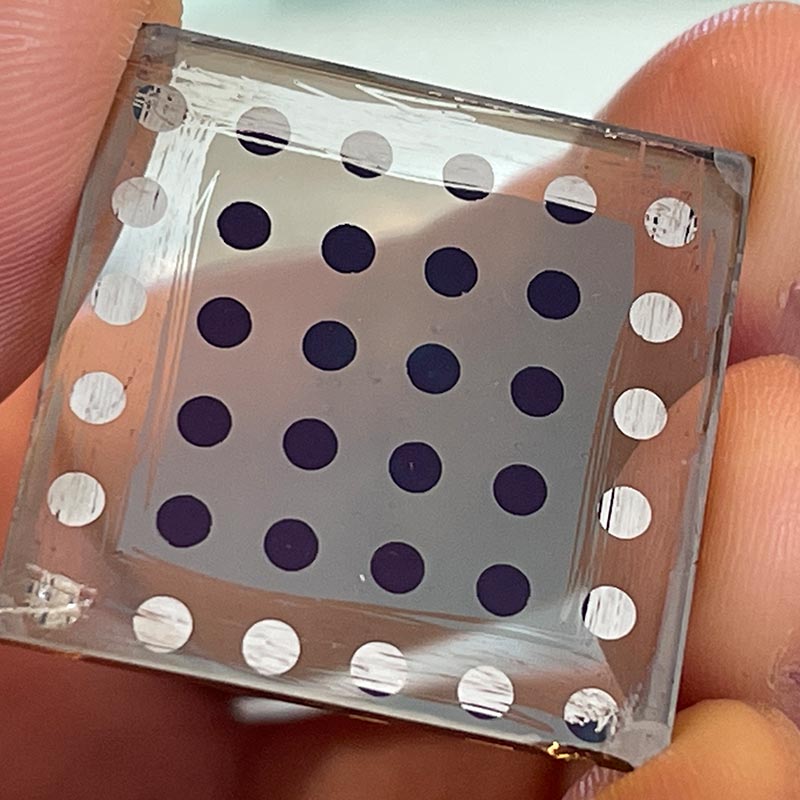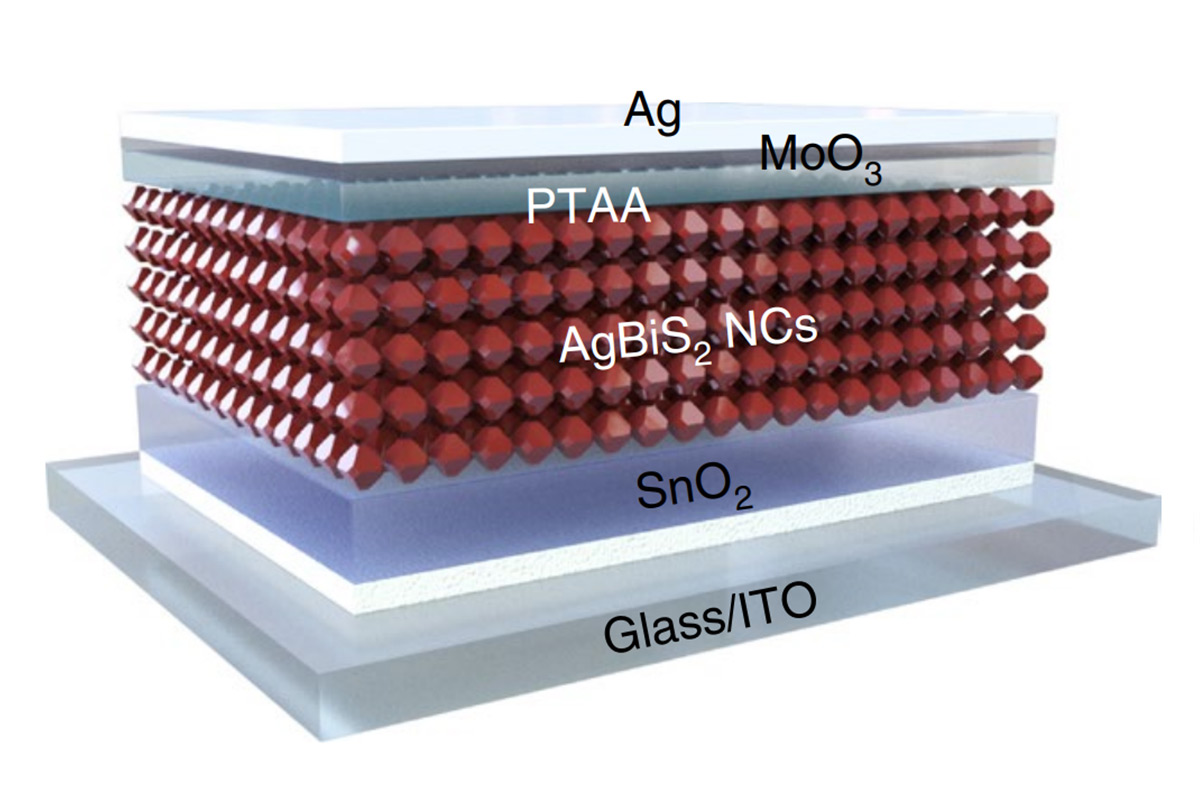Pb-free Nanocrystal-based Solar Cells
Semiconductor nanocrystals show very interesting characteristics for photovoltaic applications thanks to their ability to change optical properties with size. For example, the ability of quantum dots to absorb greater portions of the solar spectrum than conventional technologies could lead to highly efficient photovoltaic cells. However, the highest efficiencies are obtained with lead-containing materials, potentially leading to toxicity-related issues. Cutting edge research is being conducted to develop highly efficient, non-toxic alternatives.

What?
Quantum dots (QDs) are nanoscale semiconductor particles whose optical properties change with size. Currently, these materials find use in a range of applications, e.g. enhancing the colour gamut of LCDs, in medical imaging, and in LEDs. In the future, QD applications will include quantum dot solar cells (QDSCs), in which QDs act as the absorbing material in the photovoltaic device.
Why?
The added value of QDSCs arises from their:
- Use of low weight, solution processed, and environmentally friendly materials.
- High conversion efficiency.
- Ability to be deposited on flexible substrates.
- Cost-effective potential.
How?
Researchers at ICFO are working on two approaches to advance the field of QDSCs:
- Optimizing the ratio of elements in inorganic nanocrystals such as AgBiS2 to enhance efficiency.
- Improving the stability of perovskite nanocrystal based solar cells.
Who?
In the Functional Optoelectronic Nanomaterials group at ICFO, led by Prof. Dr. Gerasimos Konstantatos, researchers are working on increasing the stability and efficiency of QDSCs. The multidisciplinary group, including physicists, chemists, engineers, and device design specialists, is the world’s leading research team in the field of infrared QD materials.
ICFO research group Functional Optoelectronic Materials have paved the way for low-cost, environmentally friendly, and solution-processed photovoltaics thanks to their work on ternary silver bismuth selenide (AgBiSe2).

Schematic of the AgBiS2 nano-crystal solar cell. Link to paper.